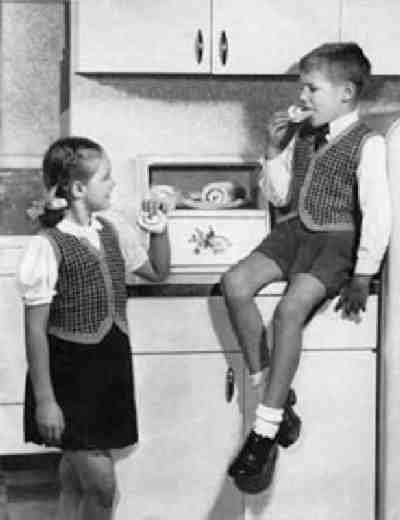
Figure 3.--American boys in the 1950s began wearing vests without suit jackets. Usually they were worn in colors contrasting with the pants. Notice this boy and his sister, in a 1958 fashion magazine, wore identcal vests.

The vest was in he 19th century mostly worn with the suit jacket. A new fashion for boys of wearing the vest without the jacket developed in the 1950s. This was primarily a winter fashion. Some discount stores like K-Mart began selling inexpemnsive trouser and vest sets to provide a dressy out fit for boys. This was a destinctly boys' style. Men did not commonly wear a vest and trouser set. Sometimes they were fancy vests added a bit of a festive air to a holiday celebration. The modern convention is for younger boys to wear a vest for dressing up without a suit jacket. Adults generally wear it with a suit jacket. A three-piece suit jacket commonly has a vest in the same material. Brightly colored vests can be worn for holidays or special occassions. Brightly colored vests were once worn by Eton and other British schoolboys.
The vest has primarily been worn as part of a "three-piece" suit. The material of the vest in fornal suits matched the material of the suit. This was quite common until the 1950s when a suit and vest began to be seen as rather too formal for boys. By the 1960s it was not common to see boys wearing three-piece suits.
As far as we can tell, the vest was primarily worn as part of a suit in the 19th and early 20th century. We see boys wearing blouses and shirts and we see boys wearing suit jackets with and without vests. We rarely, however, see boys wearing vests without their suit jackets. We have noted a few portraits of boys just wearing their vests in the 19th century \, but they are relatively rare. We are less sure about the early 20th century. A new fashion developed in the 1950s with boys wearing a vest that contrasts with a suit jacket and pants. Some were part of a suit, but others were simply purchased separately to go with a pair of short pants or slacks. It was worn as a semi-formal style of dress. It was normally worn with trousers of contasting colors. This style was particularly popular around the Christmas holidays. Such vests might be a bright holiday color.
HBC has also noted boys wearing vests as dancing costumes in Irish dance, Notably boys wear a short blazer-like jacket. Some younger boys in the 1990s began wearing the vests instead of jackets. They were more comfortable on hot days in outdoor feis dancing competitions. They were also less expensive than the jackets.
Navigate the Historic Boys' Clothing Web Site:
[Return to the Main vest page]
[Introduction]
[Activities]
[Biographies]
[Chronology]
[Cloth and textiles]
[Clothing styles]
[Countries]
[Topics]
[Bibliographies]
[Contributions]
[FAQs]
[Glossaries]
[Images]
[Satellite sites]
[Tools]
[Boys' Clothing Home]
Navigate the Historic Boys' Clothing Web chronological pages:
[Early 19th century]
[Mid-19th century]
[The 1860s]
[The 1870s]
[The 1880s]
[The 1890s]
[The 1900s]
[The 1910s]
[The 1920s]
[The 1930s]
[The 1940s]
[The 1950s]
[The 1960s]
[The 1970s]
[The 1980s]
Navigate the Historic Boys' Clothing Web style pages:
[Skeleton suits]
[Eton suits]
[Norfolk jackets]
[Kilts]
[Knicker suits]
[Blazers]
[Short pants suits]
[Long pants suits]